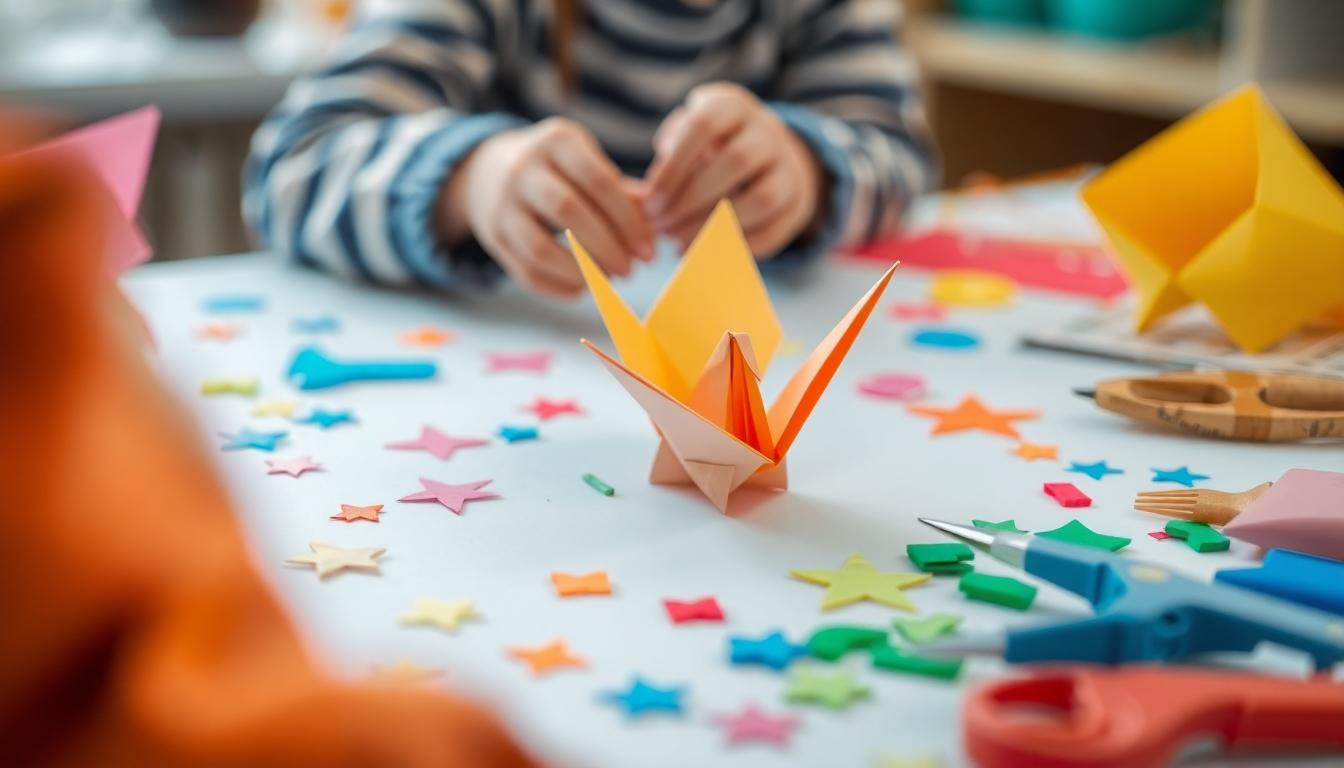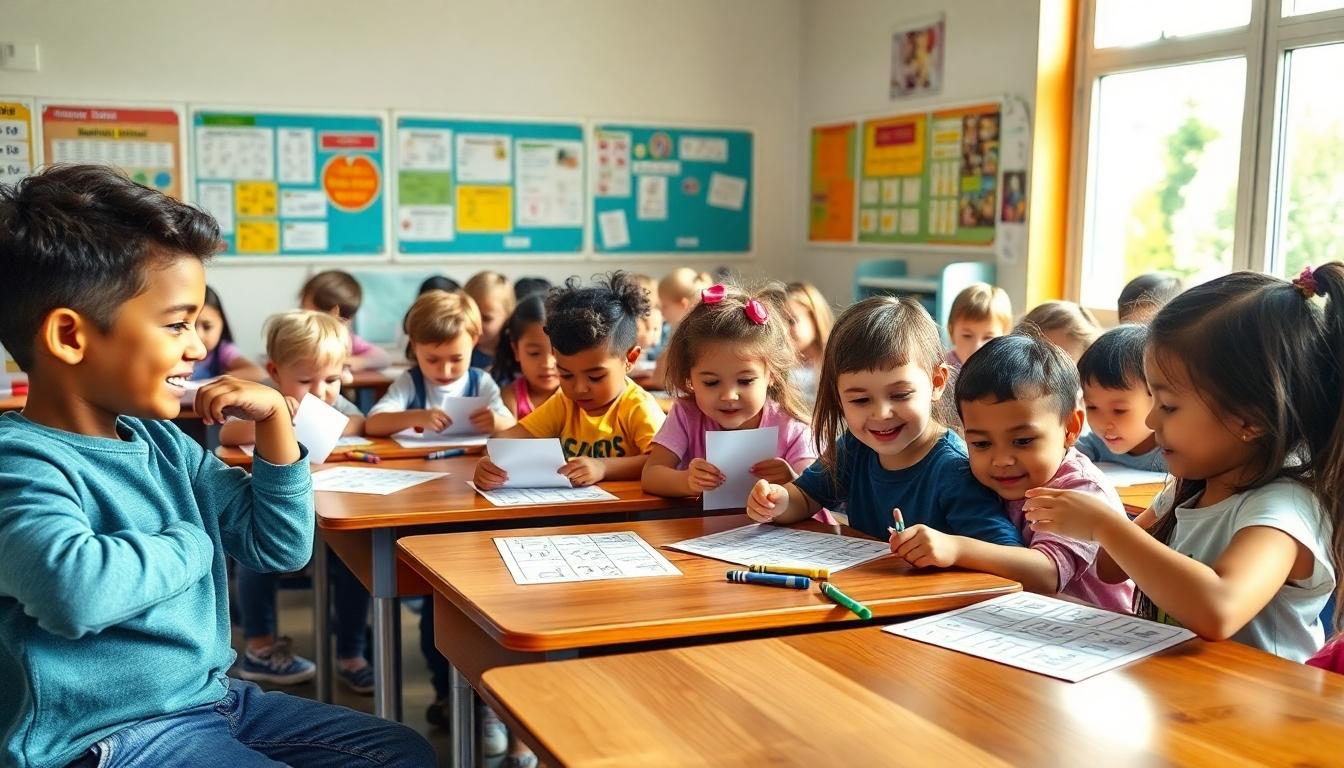Ready for a brain workout that only requires a sheet of paper? Paper riddles combine the simplicity of everyday materials with the thrill of mental challenges, making them perfect for gatherings, classrooms, or just when you’re looking to sharpen your thinking skills.
We’ve gathered the most entertaining paper riddles that’ll test your creativity and problem-solving abilities. From folding challenges to visual puzzles, these riddles transform ordinary paper into extraordinary entertainment. They’re not just fun—they’re also excellent exercises for developing spatial reasoning and out-of-the-box thinking that can benefit both children and adults alike.
What Are Paper Riddles and Why They’re Perfect Brain Teasers
Paper riddles are captivating puzzles that use simple pieces of paper as their primary medium, challenging players to solve problems through folding, cutting, positioning, or visual interpretation. Unlike traditional word-based riddles, these tactile brain teasers transform ordinary paper into interactive puzzle experiences that stimulate multiple cognitive functions simultaneously.
The beauty of paper riddles lies in their accessibility—anyone with a sheet of paper can participate without needing expensive materials or digital devices. Their simplicity makes them perfect for impromptu entertainment at family gatherings, waiting rooms, or classrooms where resources might be limited.
Paper riddles excel as brain teasers for several compelling reasons:
- Multi-sensory engagement – Paper riddles involve touch, sight, and spatial manipulation, creating a more immersive learning experience than purely verbal or visual puzzles.
- Spatial reasoning development – Folding, cutting, and manipulating paper helps strengthen mental rotation skills and spatial awareness that benefit everything from mathematics to navigation.
- Concrete problem-solving – These puzzles provide immediate tactile feedback, allowing players to test hypotheses and see results instantly, reinforcing critical thinking processes.
- Adaptable difficulty levels – Paper riddles can range from simple exercises suitable for young children to complex challenges that stump even the most analytical adults.
- Cross-generational appeal – Their fundamental nature transcends age gaps, making them excellent activities for bringing together different generations in collaborative problem-solving.
The cognitive benefits extend beyond mere entertainment. Regular engagement with paper riddles has been linked to improved concentration, enhanced memory function, and greater creative thinking capabilities. Teachers often incorporate these activities into their curriculum as they help students develop patience and perseverance when facing intellectual challenges.
What truly sets paper riddles apart from digital alternatives is the tangible satisfaction of manipulating a physical object to reveal a solution—a tactile “aha moment” that digital puzzles simply cannot replicate.
10 Easy Paper Riddles for Beginners

Looking for some simple yet captivating paper puzzles to get started? These beginner-friendly riddles will challenge your mind without overwhelming you, perfect for those new to paper puzzles.
Classic Origami Riddles
Origami challenges function as visual riddles that test your spatial reasoning and logic skills. The traditional crane design requires following a exact sequence of folds that creates a beautiful bird from a simple square paper. Paper boxes offer another intriguing challenge where the solution emerges through precise folding techniques. Boat designs transform flat sheets into floating vessels through a series of strategic folds. Each origami creation presents a unique spatial puzzle that exercises your brain’s problem-solving abilities. These ancient Japanese paper-folding techniques provide satisfying “aha” moments when you successfully complete the transformation from flat paper to three-dimensional object.
Simple Paper Folding Challenges
Paper airplane folding stands as one of the most accessible paper challenges for beginners. The basic dart plane requires just a few strategic folds but teaches fundamental concepts of aerodynamics and balance. Paper boat construction offers another straightforward challenge that results in a functional floating vessel when completed correctly. Folding paper into simple animals like dogs or cats can serve as entertaining puzzles for young beginners. Fortune tellers (also called cootie catchers) combine folding skills with creative thinking to produce an interactive paper toy. These entry-level paper folding activities develop fine motor skills while introducing the fundamentals of paper manipulation that lead to more complex challenges.
What has words but never speaks? A book provides the perfect answer to this classic paper-themed riddle. What can travel around the industry while staying in a corner? A stamp solves this clever postal puzzle. What has one eye but can’t see? A needle represents another simple riddle with a clear solution. Desk pad riddles offer additional paper-related brain teasers, asking you to identify items that protect desk surfaces from spills and scratches. These straightforward riddles build confidence for beginners while introducing the logical thinking patterns needed for more advanced paper puzzles.
7 Mind-Bending Paper Puzzles That Test Your Logic

Ready to challenge your brain with puzzles that require just a sheet of paper? These seven logic-testing challenges will push your mathematical and pattern recognition skills to their limits.
Mathematical Paper Riddles
Mathematical paper riddles transform simple sheets of paper into powerful tools for problem-solving and critical thinking. The “Guess the Number” challenge invites participants to select a number between 1 and 10, then applies a series of mathematical operations that mysteriously lead the puzzler back to their original choice. Multiplication puzzles offer another intriguing challenge, where solving problems like multiplying a 3-digit number by a single digit creates unexpected wordplay or visual patterns on paper. These puzzles don’t require advanced mathematical knowledge but instead test your ability to recognize relationships between numbers and think creatively about numerical operations. Paper-based mathematical riddles provide a tactile dimension to problem-solving that makes abstract concepts concrete and approachable for puzzlers of all ages.
Sequence and Pattern Challenges
Sequence and pattern challenges on paper test your ability to identify logical progressions and apply them to new situations. The famous “Flower Garden Problem” presents a compelling brain teaser: Amy’s sunflower seeds double each day, completely filling her garden on day 56—but when is the garden half full? The answer (day 55) reveals the exponential nature of doubling sequences, a concept more intuitively understood when visualized on paper. Pattern equation puzzles like “2+2 = 44, 3+3 = 96, 4+4 = 168, what is 6+6?” require you to discover the underlying formula (36 × 6 + 12 = 3612) by analyzing the existing pattern. The “Turtle Tank Problem” challenges you to determine how many turtles Aidan has when he attempts to place one or two in separate tanks but always ends up with either one extra tank or one extra turtle. Working through these puzzles on paper allows for visual mapping of complex relationships, making seemingly impossible problems solvable through systematic analysis and creative thinking.
5 Historical Paper Riddles From Around the World

Paper puzzles have a rich global heritage that spans centuries. Let’s explore how different cultures transformed simple paper into mind-bending challenges that continue to influence our puzzle traditions today.
Ancient Chinese Paper Puzzles
The earliest paper riddles emerged in ancient China, where they became an integral part of lantern festivals throughout the country. Festival participants eagerly solved wordplay and visual puzzles written on scrolls or intricately folded paper. These paper-based challenges actually evolved from earlier puzzles created on bamboo strips, showcasing the Chinese innovation in adapting intellectual games to new materials. The tradition of solving riddles during celebrations created a unique cultural experience that combined festivity with mental stimulation.
European Paper Riddle Traditions
During the Middle Ages, European scribes meticulously documented riddles on parchment and paper, preserving intellectual challenges for future generations. Alcuin of York, an influential 8th-century scholar, curated Latin riddles in manuscripts that often contained moral or intellectual themes designed to both entertain and educate. The famous Exeter Book from 10th-century England, though created on parchment, established puzzle formats and poetic enigmas that would later transition to paper as the material became more widely available. Newspapers and publications throughout Europe eventually adopted these traditions, bringing paper riddles to wider audiences across social classes.
Japanese Origami Riddles
Origami traditions in Japan incorporated clever riddles within their folded paper shapes, particularly during the Edo period (1603-1868). Craftspeople created symbolic folds that concealed hidden meanings, challenging recipients to decode both the physical form and linguistic puzzle simultaneously. These origami riddles represented a sophisticated blend of artistic craftsmanship and intellectual challenge, requiring solvers to understand cultural references and wordplay embedded within the folded creations. Japanese paper puzzles exemplified how riddles could transcend purely linguistic forms to incorporate visual and tactile elements.
Victorian Era Paper Riddles
Scrapbooks and puzzle cards became wildly popular entertainment in 19th-century Europe, especially among the growing middle class. Publications like The Strand Magazine regularly featured paper riddles that captivated readers with logic challenges and wordplay puzzles they could solve at home. Victorian families often gathered around these puzzles as evening entertainment, creating a social tradition around solving paper riddles together. The era’s fascination with intellect and clever language made paper riddles a fashionable pastime across society.
Modern Paper Puzzle Traditions
Today’s escape rooms and tabletop games frequently use paper riddles as essential components of interactive storytelling experiences. These contemporary applications build upon centuries-old traditions while adding new twists that appeal to modern audiences seeking immersive challenges. Paper puzzles continue to thrive even in our digital industry, offering a tangible alternative to screen-based entertainment that connects us with historical puzzle traditions. The enduring appeal of paper riddles demonstrates how this simple medium has maintained its power to challenge and delight across cultures and throughout history.
Paper Riddles for Children: Educational Fun in the Classroom

Paper riddles offer tremendous educational value in classroom settings, combining entertainment with cognitive development. Children naturally engage with these puzzles, which serve as powerful tools for building critical thinking skills as they analyze information and apply logical reasoning. Teachers across grade levels incorporate paper riddles into their curriculum because they activate multiple thinking processes simultaneously, improving analytical abilities while improving memory recall.
The educational benefits of paper riddles extend far beyond simple entertainment. Students develop crucial comparative and generalization skills when working through these challenges, preparing them for more complex academic tasks. Game-based learning through paper riddles creates an environment where children remain entertained while their creative thought processes are continuously stimulated.
Using visual paper riddles activates children’s imagination in unique ways that digital alternatives cannot match. Many educators pair these puzzles with colorful visual aids to deepen engagement and encourage students to interact more meaningfully with educational content. The tactile nature of manipulating paper while solving riddles provides a multi-sensory learning experience that helps concepts stick in young minds.
Logical thinking foundations are established when children regularly solve paper riddles in classroom settings. These activities teach students to employ clear reasoning and proof-based thinking, establishing intellectual habits that support future academic success. Paper riddles require minimal resources yet deliver maximum educational impact, making them ideal for resource-conscious educational environments.
Advanced Paper Riddles for Puzzle Enthusiasts

Paper riddles offer sophisticated challenges for experienced puzzlers who crave mental stimulation beyond basic brainteasers. These advanced puzzles transform simple paper into complex problem-solving experiences that test logic, pattern recognition, and lateral thinking abilities.
Arranging Paper Strips
Arranging paper strips presents a deceptively simple yet intellectually demanding challenge. This puzzle type involves writing clues or messages on paper strips, cutting them strategically, and challenging players to reassemble them in the correct order. The cutting pattern can be designed to require exact logical reasoning or additional contextual hints for proper arrangement. We’ve found that varying the cut patterns—using zigzags, curves, or irregular shapes—adds complexity and prevents players from relying solely on matching edges.
Jigsaw puzzles, while familiar to many, reach new levels of difficulty at the advanced stage. A 2000-piece paper jigsaw puzzle demands exceptional pattern recognition and strategic sorting techniques. These extensive puzzles require players to develop systematic approaches to grouping similar colors, identifying edge pieces, and recognizing subtle pattern variations that indicate correct placement.
Multi-Step Paper Challenges
Multi-step paper challenges elevate the puzzle experience by creating a sequence of interconnected riddles. Each solved clue reveals information needed for the next stage, forming an intellectual journey rather than a single puzzle. Players must track multiple pieces of information simultaneously while progressing through the challenge sequence.
Cryptic messages often serve as the backbone of these multi-layered paper puzzles. The sequential nature of these challenges requires players to decode one message to unlock critical information for the next step. Paper serves as the ideal medium for these puzzles, allowing players to physically manipulate clues, make notes, and visualize connections between different elements. This format encourages collaborative solving when played in groups, with different team members potentially recognizing different aspects of the puzzle.
Cryptic Paper Clues and Answers
Cryptic paper clues challenge solvers to look beyond the obvious and identify hidden patterns or codes embedded within seemingly ordinary text or designs. These puzzles often employ misdirection, requiring lateral thinking to recognize the true nature of the challenge.
The cipher wheel puzzle exemplifies this approach, using paper-based tools to encode and decode messages. Players typically rotate concentric paper circles with letters or symbols to translate encrypted text into readable messages. This mechanical aspect of paper puzzles adds a tactile dimension to the solving process that digital alternatives can’t replicate. Successfully handling these cryptic challenges delivers a unique satisfaction as physical manipulation reveals hidden meanings and unexpected answers.
How to Create Your Own Original Paper Riddles

1. Start with the Answer
Beginning with a clear answer in mind makes crafting your riddle much easier. We recommend selecting simple, tangible objects like “key,” “book,” or “paper” as your answers to ensure your riddle remains solvable. Tangible objects provide concrete characteristics you can describe and transform into clues. Overly complex or abstract answers often lead to confusing riddles that frustrate rather than entertain your audience.
2. Descriptive Brainstorming
Creating a comprehensive list of attributes is crucial for developing compelling clues. List everything about your chosen object including shape, color, function, and metaphorical associations (like “angry” for a triangle’s sharp edges). Paper riddles specifically benefit from incorporating physical properties such as folds, layers, or text placement opportunities. Consider how your object interacts with the industry—does it transform, serve multiple purposes, or connect to common experiences?
3. Structure the Riddle
Rhyme and rhythmic phrasing make your riddles more memorable and captivating. Tools like RhymeZone can help you find perfect word pairs for your clues. A well-structured riddle flows naturally and creates satisfaction when solved. For example:
*”I’m not alive, but I grow with ink.
Open my pages to let knowledge drink.”*
(Answer: Book)
This structure guides your audience through the mental challenge while maintaining an enjoyable rhythm.
4. Integrate Physical Elements
Paper riddles shine when they combine wordplay with tactile interactions. We can enhance the puzzle experience by incorporating:
- Accordion folds that hide words across different sections
- Symbol ciphers replacing letters with custom shapes or icons
- Cut-out patterns that align to reveal hidden clues
- Layered hints using translucent sheets that must be properly aligned
- Directional folds requiring exact folding sequences to reveal answers
These physical elements transform a simple riddle into an interactive experience that engages multiple senses.
5. Test and Refine
Testing your riddles with diverse groups provides invaluable feedback. If people solve your riddle too quickly, add more abstraction to your clues (e.g., “I’m flat as a leaf but hold worlds unseen” instead of directly mentioning pages). Ensure all required information is physically present in your puzzle design. Good riddles balance challenge with fairness—they should be difficult enough to engage but eventually solvable with the clues provided.
Key Considerations for Paper Riddles
Creating truly outstanding paper riddles requires attention to several critical factors. Clarity remains essential—avoid ambiguity and ensure your metaphors align with common associations. Your riddle should match the overall theme of your puzzle narrative, especially for themed activities like treasure hunts. Consider accessibility by designing adjustable difficulty levels that appeal to various skill levels, making your riddles inclusive for all participants.
Combining traditional riddle structures with paper-create mechanics lets you develop captivating, solvable puzzles that captivate your audience. The satisfaction of manipulating physical elements to discover hidden meanings creates a unique puzzle-solving experience that digital alternatives simply cannot replicate.
The Science Behind Why Paper Riddles Improve Cognitive Skills

Cognitive Benefits of Puzzles and Brain Teasers
Research consistently demonstrates that paper riddles offer substantial cognitive advantages. Captivating with these tactile brain teasers enhances critical thinking and problem-solving abilities by challenging our minds to analyze information, identify patterns, and develop creative answers. When we work through paper riddles, our brains actively practice spatial reasoning and pattern recognition—essential cognitive skills that transfer to real-industry applications.
Paper riddles also promote cognitive flexibility, allowing us to apply skills learned through puzzles to other challenging situations requiring similar mental processes. This transfer effect makes regular puzzle-solving particularly valuable for ongoing brain health. Also, these tactile challenges build emotional resilience by teaching us to manage frustration and persist when answers aren’t immediately obvious.
General Benefits of Cognitive Games
The cognitive advantages of paper riddles align with findings from research on similar mental activities. Crossword puzzles, for instance, have been scientifically proven to slow cognitive decline and improve memory function in older adults, sometimes outperforming digital alternatives. These traditional paper-based challenges engage multiple brain regions simultaneously.
Jigsaw puzzles offer comparable benefits to paper riddles, activating many cognitive abilities that potentially protect against age-related mental decline. Multiple studies suggest that regular engagement with physical puzzles creates neural pathways that strengthen overall cognitive function. The multi-sensory experience of handling paper while solving complex problems provides a uniquely effective form of mental exercise that digital puzzles often cannot replicate.
6 Paper Riddle Games Perfect for Parties and Group Activities

1. Collaborative Riddle Design
Collaborative Riddle Design transforms any gathering into an interactive thinking session with minimal materials. Participants simply need paper slips and pens to create their own riddles, then exchange them with others to solve. This accessible activity encourages creativity as players create clever clues while simultaneously developing critical thinking skills when tackling others’ puzzles. Groups naturally engage in lively discussion as they attempt to decipher the riddles, making this perfect for breaking the ice at parties or team-building events.
2. Category-Based Riddles
Category-Based Riddles add structure and focus to group puzzle sessions through themed challenges. Players organize their riddles into exact categories such as food, famous places, or household objects, creating a more cohesive experience. Everyone writes their answers secretly before revealing results, adding an element of suspense and friendly competition. This format works exceptionally well for mixed-age groups, allowing participants of different knowledge levels to contribute within categories they find comfortable while stretching their thinking in others.
3. Fold-and-Pass Riddle Stories
Fold-and-Pass Riddle Stories combine narrative creativity with puzzle-solving for a uniquely entertaining experience. Players begin by writing a story element (like a mysterious object or character) on paper, fold to hide their contribution, then pass it to the next person. Each participant adds a new element without seeing previous entries, resulting in a collaborative mystery story that becomes a riddle for the group to decode. This game mirrors the classic “Pass the Paper Story Maker” but with a puzzle-solving twist that generates laughter and surprising connections.
4. Pictorial Riddle Creation
Pictorial Riddle Creation merges artistic expression with wordplay for a multi-dimensional challenge. Participants sketch an item on paper and create a complementary written riddle about their drawing. Other players must then use both visual and textual clues to guess the answer, captivating different cognitive skills simultaneously. Visual thinkers particularly excel at this game, though it offers everyone a chance to express creativity through multiple mediums. The combination of images and words often leads to clever misdirection and delightful “aha” moments when answers are revealed.
5. Question-and-Answer Swap
Question-and-Answer Swap introduces an element of chance that creates hilarious and unexpected puzzle combinations. Players independently write unrelated riddles and answers on separate pieces of paper. These are randomly distributed throughout the group, challenging participants to match questions with their intended answers. The mismatched pairings often create absurd or surprisingly logical new riddles, sparking laughter and creative thinking. This format encourages social interaction as players negotiate and debate potential matches, making it ideal for livening up any gathering.
6. Timed Riddle Challenges
Timed Riddle Challenges add excitement and friendly competition to paper puzzle solving. Teams race against a clock to solve pre-written paper riddles, with points awarded for each correct answer. The time pressure heightens engagement and creates a lively atmosphere perfect for parties or icebreakers. Organizers can adjust difficulty levels and time limits to suit different groups, making this versatile for various settings. This format transforms individual puzzle-solving into a collaborative team effort where players must communicate effectively to maximize their score before time runs out.
Conclusion: Why Paper Riddles Remain Timeless in a Digital Age
Paper riddles stand as a testament to the enduring power of simple pleasures. In our increasingly digital industry they offer a refreshing tactile experience that engages our minds in ways screens simply cannot.
We’ve seen how these deceptively simple puzzles span cultures and centuries while continuing to challenge and delight people of all ages. Their accessibility makes them perfect for impromptu entertainment while their educational benefits make them valuable tools for cognitive development.
What makes paper riddles truly special is their ability to create those “aha moments” that come from physically manipulating an object to reveal a solution. They remind us that sometimes the most captivating challenges require nothing more than a sheet of paper and our imagination.
Frequently Asked Questions
What makes paper riddles different from other types of puzzles?
Paper riddles offer a unique tactile experience that digital puzzles can’t replicate. They engage multiple senses as you fold, cut, or manipulate the paper, stimulating various cognitive functions simultaneously. Their physical nature creates a tangible “aha moment” when you discover the solution, making the experience more memorable and satisfying than screen-based alternatives.
Are paper riddles suitable for children?
Absolutely! Paper riddles are excellent for children of all ages. They help develop crucial skills like spatial reasoning, problem-solving, and creativity. The difficulty can be easily adjusted to match a child’s ability level, and they require minimal materials—just paper and sometimes scissors. Teachers often incorporate paper riddles into classrooms to build patience and perseverance.
How can paper riddles benefit cognitive development?
Research shows paper riddles enhance critical thinking, problem-solving abilities, and cognitive flexibility. They promote spatial reasoning and pattern recognition skills that transfer to real-world applications. The physical manipulation of paper activates multiple brain regions, contributing to improved concentration, memory function, and creative thinking capacity with regular engagement.
What are some beginner-friendly paper riddles?
Beginners can start with classic origami challenges like simple cranes or boats, basic paper folding activities like paper airplanes or fortune tellers, and traditional paper-themed riddles such as “What has words but never speaks?” (a book). These entry-level puzzles build confidence while developing the foundational skills needed for more complex paper challenges.
Can paper riddles be used for group activities or parties?
Paper riddles make excellent party games! Try collaborative riddle design where guests create and exchange riddles, category-based riddle challenges, fold-and-pass riddle stories, pictorial riddle creation, question-and-answer swaps, or timed riddle challenges. These activities foster creativity, critical thinking, and social interaction, making them perfect for parties and team-building events.
What’s the history behind paper riddles?
Paper riddles have rich cultural roots worldwide. Ancient Chinese paper puzzles became part of lantern festivals, Europeans documented riddles on parchment, and Japanese incorporated riddles into origami during the Edo period. The Victorian era popularized puzzle cards and scrapbooks, while modern escape rooms continue the tradition. This heritage connects contemporary puzzle enthusiasts with historical puzzle-solving traditions.
How can I create my own paper riddles?
Start with a clear answer and brainstorm descriptive attributes for compelling clues. Structure your riddle with rhyme and rhythm for memorability, and incorporate physical paper elements for interactivity. Test your creation with diverse groups to ensure it’s challenging yet solvable. Focus on clarity, thematic alignment, and accessibility for different skill levels to craft truly engaging puzzles.
What are some advanced paper riddles for experienced puzzlers?
Advanced puzzlers can try paper strip arrangements that require reassembling cut messages, complex paper jigsaws demanding exceptional pattern recognition, multi-step challenges where each clue leads to the next, and cryptic puzzles requiring lateral thinking to uncover hidden patterns. The cipher wheel puzzle, combining physical manipulation with code-breaking, offers an especially engaging challenge.
How do paper riddles compare to digital puzzles?
Unlike digital puzzles, paper riddles provide a hands-on experience that engages multiple senses. They don’t require technology, making them accessible anywhere without screens or batteries. The physical manipulation of paper creates a unique neural pathway for learning and problem-solving. Many people find the tangible aspect of paper puzzles more satisfying and memorable than their digital counterparts.
Can paper riddles be incorporated into educational curriculum?
Definitely! Teachers use paper riddles to activate multiple thinking processes, improve analytical abilities, and enhance memory recall. Visual paper riddles paired with colorful aids create engaging multi-sensory learning experiences. These activities establish logical thinking foundations and proof-based reasoning while delivering maximum educational impact with minimal resources, making them ideal for classroom integration.







